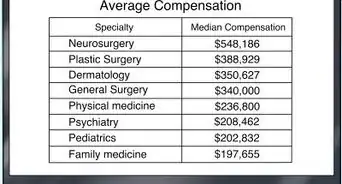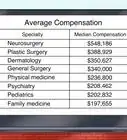This article was co-authored by Katherine Demby. Katherine Demby is an Academic Consultant based in New York City. Katherine specializes in tutoring for the LSAT, GRE, SAT, ACT, and academic subjects for high school and college students. She holds a BA in History and Political Science from the University of North Carolina at Chapel Hill and a JD from Yale Law School. Katherine is also a freelance writer and editor.
wikiHow marks an article as reader-approved once it receives enough positive feedback. In this case, 100% of readers who voted found the article helpful, earning it our reader-approved status.
This article has been viewed 523,462 times.
Ultrasound technicians use ultrasound technology to examine the health of organs as well as developing fetuses in the womb. They play a crucial role in aiding doctors with diagnosis and treatment of medical problems, and help to ensure the health of the mother and fetus during a pregnancy. To become an ultrasound technician, it's necessary to study human anatomy and receive training in using ultrasound technology. If you want to know more about how to become an ultrasound technician, keep reading.
Steps
Meeting the Educational Requirements
-
1Get a high school diploma. You'll need a high school diploma or GED in order to enroll in the educational programs that prepare you to become an ultrasound technician. As part of your prep for a career as an ultrasound technician, study math, English, computer science, health, and both the physical and life sciences as part of your high school curriculum.[1]
-
2Complete an accredited Ultrasound Technician program. Find a program accredited by the Commission on Accreditation of Allied Health Education Programs (CAAHEP), and get your Associate's Degree or complete a postgraduate certificate program.[2]
- If you're shifting careers in the health care industry, or you're a high-school graduate, you can take a one-year program. These fast-track programs generally reward you with a vocational certificate.
- Two-year programs are the most popular, and when you complete the two years (one to one and a half years if you have taken many of the prerequisite courses), you will earn an associate's degree. Most programs only require that you have a high school diploma or GED, while others might have more specific requirements (like recommendations, a certain GPA, and a personal statement).
- You can also take a four year program, and graduate with a bachelors degree.
- Stay away from eight week or six month programs. Not only do they not prepare you adequately for a career as an ultrasound technician, but it will hardly matter as you will not be competitive in the job market.
- Note that some colleges may require you to complete a Certified Nursing Associate (CNA) course before being accepted into a Diagnostic Medical Sonographer (DMS) program.
- If you already have a Bachelor’s degree or Associate’s degree and want to become an ultrasound technician, the diploma program may be the best option.
- Each program has different requirements, and the previously earned degrees may or may not have to be in a related field like Radiologic Technology, Nuclear Medicine or an Allied Health discipline
- Diploma programs offer you the opportunity to expand your career options by adding Diagnostic Medical Sonography to your expertise
- The previous degree earned and the program requirements will determine how long it takes to complete the program, but it usually take 12-18 months
- You may need to complete prerequisite courses depending on your previously earned degree
- Always choose a CAAHEP accredited diploma program
- Earning a Master’s degree in Diagnostic Medical Sonography can open up many new career options. If you are interested in moving into administration, teaching, research, publishing or a position in private industry, this is the degree to pursue.
- You must have a Bachelor’s degree to apply to a Master’s degree program
- The program is designed to be completed in 12-15 months
- You may have to take additional courses that are not part of the Master’s degree program’s core curriculum, which adds to the time it takes to complete the program
- Always attend a CAAHEP accredited program
- Clinical training may have to be completed.
Advertisement -
3Get clinical training. While you're enrolled in a program, you'll have opportunities to take internships that provide hands-on clinical experience. You'll learn ultrasound skills in a health care setting and have the opportunity to put what you've learned into practice.[3]
- You can receive additional training at professional conferences and continuing education opportunities.
- Work on gathering enough hours to take the American Registry for Diagnostic Medical Sonography (ARDMS) exams.
Getting Certified and Finding a Job
-
1Take the American Registry for Diagnostic Medical Sonography (ARDMS) exams.[4] These are not required for ultrasound technicians, but you will greatly increase your marketability—and in turn, your paycheck—by successfully completing these exams and becoming a certified ultrasound technician or Registered Diagnostic Medical Sonographer (RDMS).[5]
- The exams include two parts: a general physics section and a sub-specialty of your choice (ob-gyn, abdominal, etc.).
- Take as many exams as you want to get extra certifications that will let you specialize in certain fields.
-
2Apply for jobs. You've gone through the training, taken the tests, and now you're officially a Registered Diagnostic Medical Sonographer. Look for job openings at hospitals, doctor's offices and health clinics in your area.
Warnings
- There are many pseudo-schools or schools of questionable character that advertise a degree for ultrasound technicians. It is not uncommon for these schools to shut down or go bankrupt before the end of your training or to hand you a degree that you later find out is worthless. Be sure to go to an accredited school for ultrasound technicians and get an associate's degree.⧼thumbs_response⧽
- Many positions require you to be certified. After you graduate, make certification your highest priority.⧼thumbs_response⧽
References
About This Article
If you're considering becoming an ultrasound technician, focus on science, health, and math classes in high school. Ultrasound technicians study human anatomy and help doctors diagnose and treat medical problems, so you'll also need to work on developing good communication skills. Once you've gotten your high school diploma or GED, apply to an ultrasound technician program approved by the Commission on Accreditation of Allied Health Education Programs. To get certified, take the American Register for Diagnostic Medical Sonography's exams. To learn why having a masters degree could help you, read on!




































































Medical Disclaimer
The content of this article is not intended to be a substitute for professional medical advice, examination, diagnosis, or treatment. You should always contact your doctor or other qualified healthcare professional before starting, changing, or stopping any kind of health treatment.
Read More...